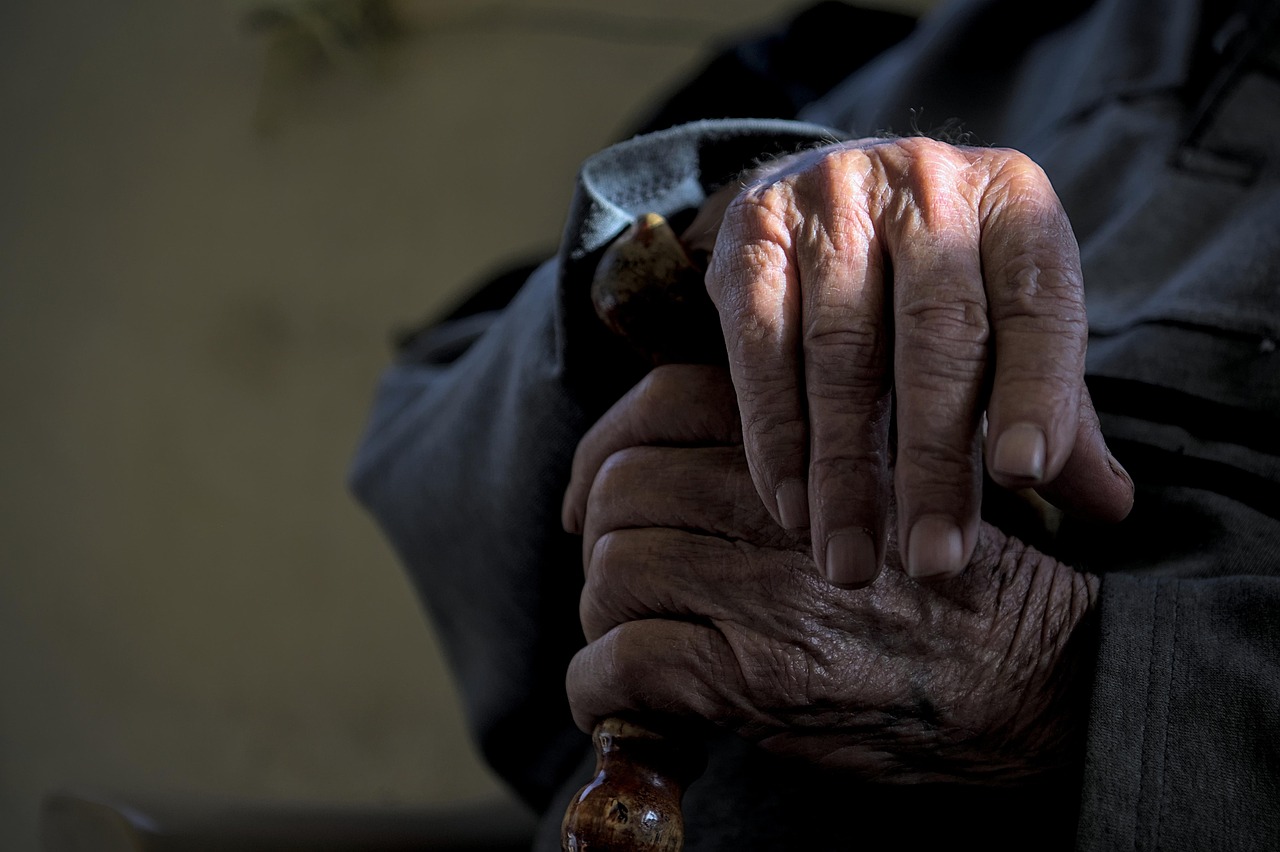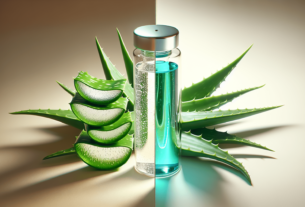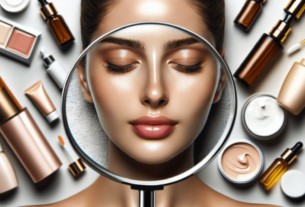Have you ever glanced in the mirror and wondered about the subtle changes in your skin that seem to whisper tales of time? The mirror, after all, doesn’t lie—it simply reflects. This reflection might show a few fine lines today, and perhaps a slight dullness that wasn’t there yesterday. Recognizing these early signs of skin aging provides a golden opportunity to address them proactively.
Skin, your body’s largest and most visible organ, serves as an intricate canvas of life’s experiences. Knowing how to discern and address skin aging signs early can make a world of difference in maintaining its youthful vigor. Let’s embark on a path to understanding your skin better, exploring how to nurture its vitality with grace and knowledge.
Understanding Skin Aging
What exactly happens when your skin ages? As you live life’s journey, your skin faces various intrinsic and extrinsic factors. Intrinsic aging, also known as chronological aging, is a natural process influenced by genetics. On the other hand, extrinsic aging results from external factors like sun exposure, pollution, and lifestyle choices.
Understanding the mechanisms behind these processes can empower you to take charge of your skin’s health and beauty.
Intrinsic Aging: The Inevitable Clock
Intrinsic aging is akin to a quiet, imperceptible clock. It slowly ticks away, driving changes in skin structures and functions. The reduction in collagen production, a gradual decrease in elastin, and the slowdown in cell turnover contribute to the thinning and drying of your skin. You might notice a gentle slackening and less elasticity as collagen, elastin, and other supportive skin structures diminish over time.
Extrinsic Aging: The Environmental Influences
Your lifestyle and environment play a substantial role in how your skin ages. Factors such as UV exposure, pollution, smoking, and diet can accelerate the aging process. Among these, UV exposure from the sun, called photoaging, is the most significant contributor. It leads to wrinkles, a loss of skin tone, and an uneven complexion. Recognizing these factors arms you with the knowledge to combat their effects effectively.

Identifying Early Signs of Skin Aging
Knowing what to look for on this mirror journey is crucial. Here’s how you can detect the early tell-tale signs:
Fine Lines and Wrinkles
Look closely at areas prone to movement like the corners of your eyes and mouth. These are often the first places where you might observe faint lines. Such lines form due to repetitive facial expressions and the natural loss of skin elasticity. Identifying them early can prompt preventative measures.
Dull Complexion
A youthful, vibrant glow can start to fade with early aging. This change often results from reduced skin cell turnover, leading to a build-up of dead skin cells. Your skin may appear tired, yet this can be revitalized with proper care.
Uneven Skin Tone
Spots or patches that you haven’t noticed before could indicate hyperpigmentation or sun damage, contributing to an uneven skin tone. Addressing this early prevents further darkening and the possibility of more stubborn spots developing.
Loss of Firmness
A subtle loss of firmness, especially around the jawline or cheeks, can signify the onset of aging. The skin may follow gravity more readily, urging you to bolster its support systems with targeted treatments.
How to Address Skin Aging Signs Early
You have marvelously identified those early clues. Now, it’s time to take an informed approach to care for your skin with intention and tenderness.
Protective Skincare Routine
Consistency is key in a skincare routine designed to combat early aging signs. This routine doesn’t have to be complicated; instead, it should be effective and well-suited to your skin’s needs.
Cleansing
Begin with a gentle cleanser to purify your skin without stripping its essential natural oils. A gentle cleanser respects your skin’s natural balance and prepares it for the absorption of subsequent products.
Moisturizing
Hydration is your skin’s best friend. Use a moisturizer that caters to your skin type while focusing on maintaining moisture and supporting the skin’s barrier function. Look for products enriched with hyaluronic acid for plumping and hydration.
Sun Protection
Never underestimate the power of a good sunscreen. UV rays can deeply affect your skin’s health. Wear a broad-spectrum SPF daily, regardless of the weather or your plans for the day.
Antioxidant Serum
Incorporate a vitamin C serum into your routine. Such serums tackle free radicals, helping protect your skin and enhance its radiance. Antioxidants are vital in counteracting the damaging effects of extrinsic aging.
Healthy Lifestyle Adjustments
Your lifestyle choices weave a rich tapestry in your skin’s narrative.
Balanced Diet
Consumables rich in antioxidants, healthy fats, and hydration support your skin from the inside out. Integrate plenty of fruits, vegetables, nuts, and seeds to nourish your skin’s vitality.
Stay Hydrated
Water is essential not just for survival but also for optimal skin function. It supports detoxification and cellular repair. Aim for adequate daily water intake to keep your skin plump and radiant.
Sleep Well
Good sleep is nature’s greatest healer. During sleep, your skin repairs and rejuvenates itself. Cultivate habits that promote restful sleep, such as maintaining a regular bedtime and creating a relaxing pre-sleep routine.
Regular Exercise
Exercise improves blood circulation, delivering nutrients and oxygen to your skin. It supports the production of collagen for firmer, more elastic skin. Aim for a mix of cardiovascular, strength training, and flexibility exercises for a holistic benefit.
Non-Invasive Treatments and Techniques
Sometimes your skin might desire a little more than just topical treatments.
Professional Exfoliation
Consider scheduling regular sessions with a dermatologist or esthetician for exfoliating treatments like microdermabrasion or chemical peels. These remove dead skin cells and stimulate new cell growth, enhancing your skin’s texture and glow.
Microneedling
Microneedling is a technique that involves using fine needles to create micro-injuries in the skin, which encourages collagen production. This treatment can address fine lines and improve overall skin tone and texture.
Laser Treatments
Non-ablative laser treatments can refine skin texture by stimulating collagen production without causing harm to the skin’s surface. These treatments can be effective for addressing early aging signs and achieving a smoother, toned complexion.
When to Seek Professional Advice
Sometimes, the mirror’s reflection mirrors an increasingly persistent concern, despite diligent care. Those moments might be when it’s prudent to consult with a dermatologist. Specialists can offer insights tailored to your skin’s specific needs and help navigate treatment options if necessary.
Dermatologist Consultations
Regular check-ins with a dermatologist can not only address concerns but also keep you informed of new technologies and treatments. They provide professional evaluations and recommendations, ensuring your skincare routine remains current as your skin evolves.
Personalized Treatments
Dermatologists can design personalized treatment plans, weaving together various methodologies to achieve desired outcomes safely and effectively. Whether through topical prescriptions or advanced treatments, they can provide comprehensive strategies to support your skin health.
Embracing the Journey Ahead
The natural aging process is nothing short of beautiful when you understand and embrace it. Growing into your skin with wisdom, equipped with knowledge, enhances and enriches your spirit. By identifying and addressing early signs of skin aging, you ensure that time cherishes, rather than tarnishes, your canvas.
The gentle whispers of wisdom in each wrinkle and story in every freckle are tokens of life well-lived. Your skin, in its evolution, deserves care that’s patient, kind, and informed. A narrative not just of age but of wisdom, grace, and vitality awaits to be written.



